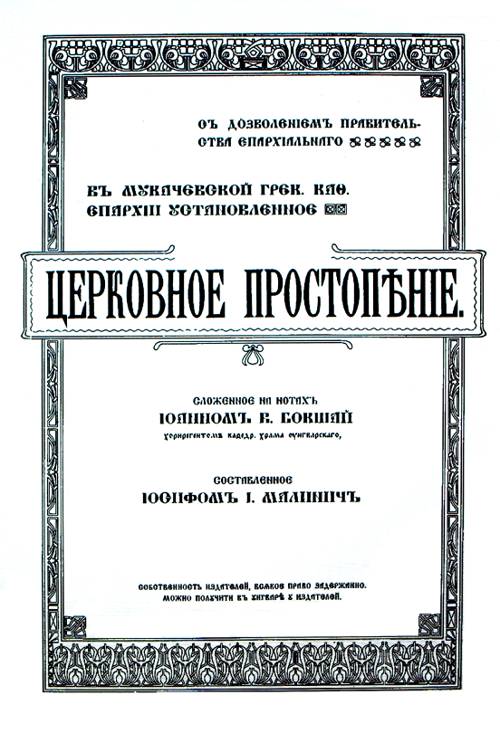
FAQ About The Influence of Byzantine Music on Eastern European Chants

What is Byzantine music?
Byzantine music is a form of medieval music that crafted the liturgical chant traditions of the Eastern Orthodox Church. Originating during the Byzantine Empire, it is characterized by its monophonic, or single-line, melody, which served as a foundation for later developments in Eastern European spiritual music traditions. Its melodic and modal structures were intended to enhance worship and elevate spiritual experiences.

How did Byzantine music influence Eastern European chants?
Byzantine music influenced Eastern European chants mainly through the dissemination of liturgical texts and melodies as the Eastern Orthodox Church expanded. It introduced modal systems, rhythmic patterns, and a unique spiritual aesthetic that was adapted and localized, thus shaping the chant traditions of countries like Russia, Bulgaria, and Serbia. This influence is evident in the modal structures and melodic contours that resonate within these regions' chants.

What are some common elements between Byzantine music and Eastern European chants?
Common elements include the use of modal systems, which dictate the scale patterns; a monophonic texture, focusing on a single melody line; and the absence of instrumental accompaniment. Both musical forms emphasize vocal delivery to enhance liturgical texts, using melodic variations and ornamentations to convey spiritual depth and emotional expression.

Why is monophony important in Byzantine and Eastern European chant music?
Monophony, or music with a single melody line, is crucial as it focuses on the clarity and solemnity of liturgical texts. In both Byzantine and Eastern European chants, this approach ensures that the spiritual message remains prominent and undistorted by harmonization, which aligns with religious traditions emphasizing textual comprehension and spiritual meditation.

What role did the Eastern Orthodox Church play in spreading Byzantine music?
The Eastern Orthodox Church was instrumental in spreading Byzantine music as it was the custodian of the liturgical texts and musical traditions. Through ecclesiastical missions, liturgical reforms, and the establishment of monastic communities, the Church propagated Byzantine musical characteristics throughout Eastern Europe, integrating them into local musical practices and ensuring their enduring influence.

How do Eastern European countries differ in their interpretation of Byzantine music?
While they all draw from Byzantine roots, each Eastern European country adds its cultural nuances to the music. For example, Russian chants tend to be more somber and expansive, Bulgarian chants are known for their rich harmonies borrowed from local folk music traditions, and Serbian chants emphasize rhythmic diversity. These variations reflect regional aesthetics and liturgical needs.

What is the modal system used in Byzantine music and its influence on Eastern European music?
The modal system, known as the Octoechos, comprises eight modes or scales that dictate the melodic structure of Byzantine chants. These modes provided the framework for versatility and emotional expression in music. In Eastern Europe, the adoption of similar modal systems facilitated the development of distinct regional chants that retained connection to their Byzantine origins while embracing local musical traditions.

Are there any modern practices that still incorporate Byzantine musical elements?
Yes, Byzantine musical elements are still present in modern liturgical practices within the Eastern Orthodox Church worldwide. Furthermore, some contemporary Eastern European composers experiment with Byzantine-inspired modes and melodies in classical compositions, seeking to create works that echo the spiritual depth and cultural heritage of this ancient musical tradition.

What are some notable examples of Byzantine music's influence on Russian Orthodox chants?
Notable examples include the znamenny chant, which reflects Byzantine modal influences and monophonic texture. The adoption of Byzantine liturgical texts and musical theories during the Kievan Rus period laid the foundation for these Russian chant traditions, which then evolved with additional local flavor and complexity.

How has Byzantine music contributed to cultural expression in Eastern Europe?
Byzantine music has considerably contributed to the cultural expression in Eastern Europe by providing a musical framework that intertwines with religious, historical, and cultural narratives. It helped preserve linguistic and liturgical identities and influenced secular music forms, enriching the cultural tapestry of Eastern European societies through a shared spiritual heritage.

Can Byzantine music be considered purely religious or does it have secular influences?
Primarily religious, Byzantine music was designed to be an integral part of Christian liturgical ceremonies. However, the principles of melody, modal structures, and vocal techniques developed in this tradition have influenced secular music. As these musical concepts spread, they sometimes integrated with local folk music traditions, leading to a cross-pollination between sacred and secular sounds.

How did the fall of the Byzantine Empire affect the spread and preservation of Byzantine music?
The fall of the Byzantine Empire in 1453 posed challenges for the direct propagation of its musical traditions, but it also catalyzed their spread throughout Eastern Europe. Refugees and scholars brought liturgical texts and musical knowledge to neighboring regions, which absorbed and preserved these traditions within local practices, ensuring their survival and evolution.

What instruments, if any, are associated with Byzantine music?
Byzantine music is predominantly vocal and typically does not utilize instruments in its traditional liturgical settings, aligning with the Orthodox Church's focus on the purity of the vocal chant. Over time, however, some secular forms rooted in Byzantine modes may involve instruments, but these are separate from the ecclesiastical tradition.

How did Byzantine modal systems influence Western music?
Byzantine modal systems contributed to the evolution of Western music by offering a structured approach to melody and composition. Early Western liturgical chant, such as Gregorian chant, incorporated similar modal systems, reflecting the transference and adaptation of ancient Eastern musical theories into Western contexts.

What is the significance of ornamentation in Byzantine and Eastern European chants?
Ornamentation in these chants serves to enhance the emotional and spiritual expression of the music. Through melismatic singing, where multiple notes are sung to a single syllable, and the use of intricate vocal turns, chants deliver vivid emotional narratives and a sense of reverence, aligning with their role in worship and spiritual reflection.

Are there any famous Byzantine composers or chant leaders known for their work?
Famous figures include St. John of Damascus and Kassia the Nun, who were renowned for composing hymns and organizing chant repertoires in the Byzantine tradition. Their contributions are integral to the development and systematization of Byzantine music, and their works continue to be performed and revered in Eastern Orthodox liturgical practices today.

How do Eastern Catholic churches relate to Byzantine musical traditions?
Eastern Catholic Churches, which follow the Byzantine Rite, also preserve and practice Byzantine musical traditions. They maintain the liturgical and musical frameworks established by the Byzantine Empire, thereby enriching their worship with ancient chant traditions that are parallel to those of Eastern Orthodoxy.

What are some challenges in studying Byzantine music today?
Challenges in studying Byzantine music include the scarcity of original manuscripts, variations in musical interpretation over centuries, and the complexity of its notation system. Additionally, much of the knowledge has been transmitted orally, which can lead to discrepancies in historical accuracy. Scholars often rely on comparative studies and cross-referencing with extant manuscripts to reconstruct its history.

How have digital archives contributed to the study of Byzantine and Eastern European chants?
Digital archives have significantly advanced the study of Byzantine and Eastern European chants by providing greater access to rare manuscripts, recordings, and scholarly works. They facilitate comparative studies and the sharing of resources among researchers worldwide, fostering a deeper understanding and preservation of these rich musical traditions.
